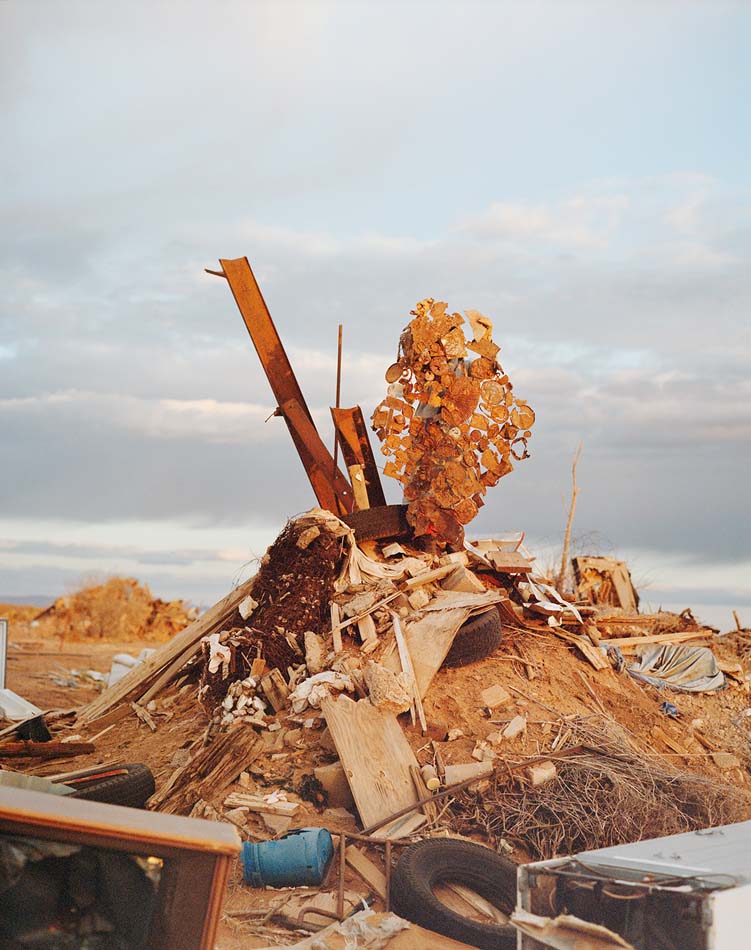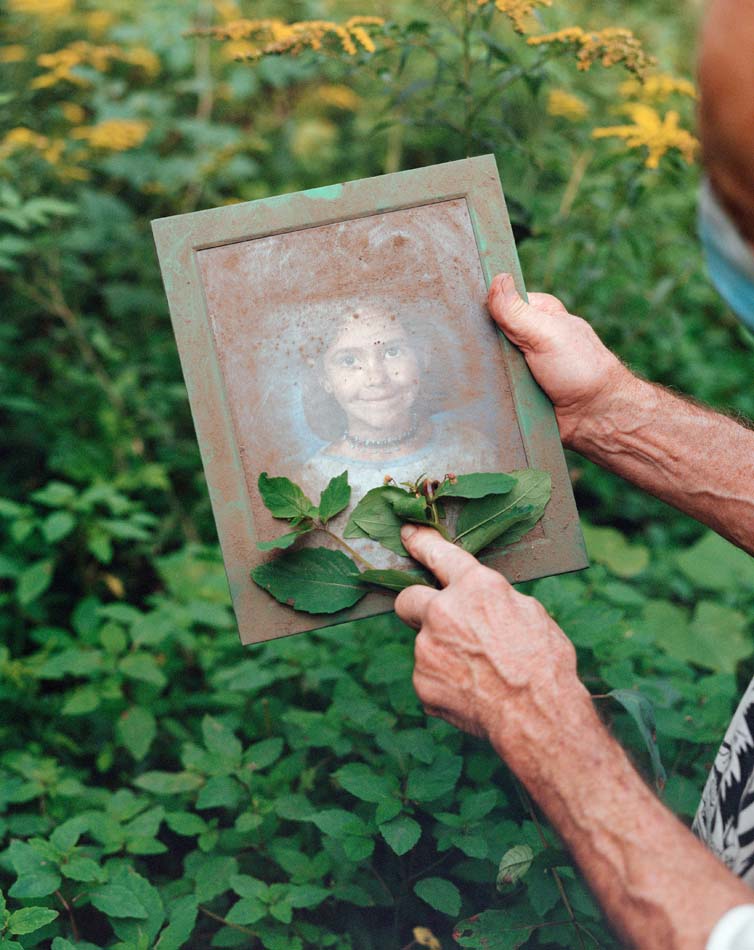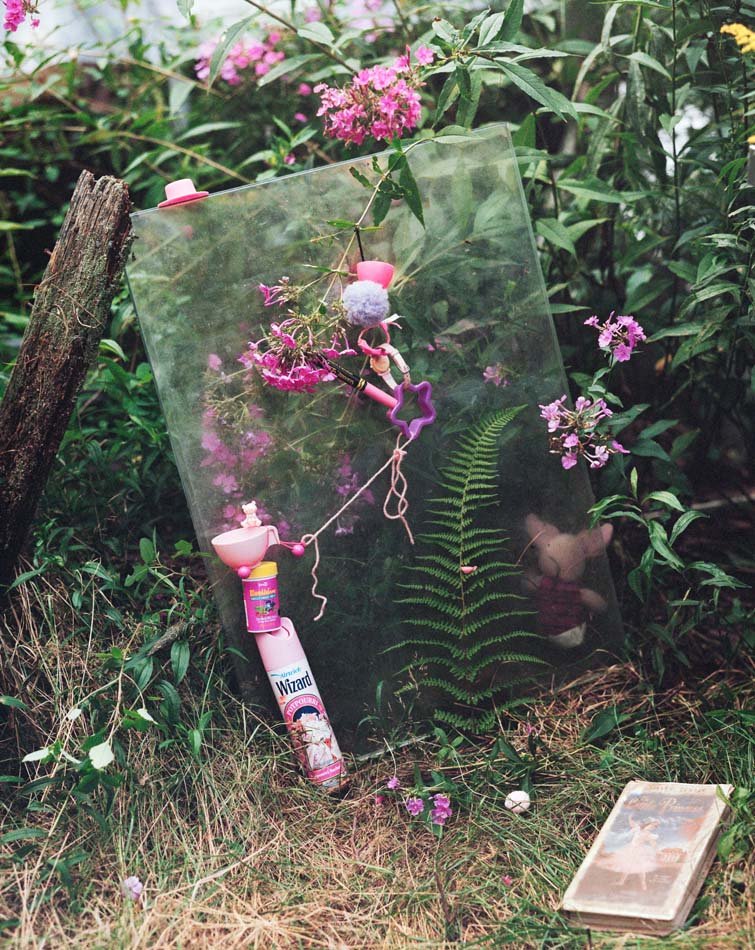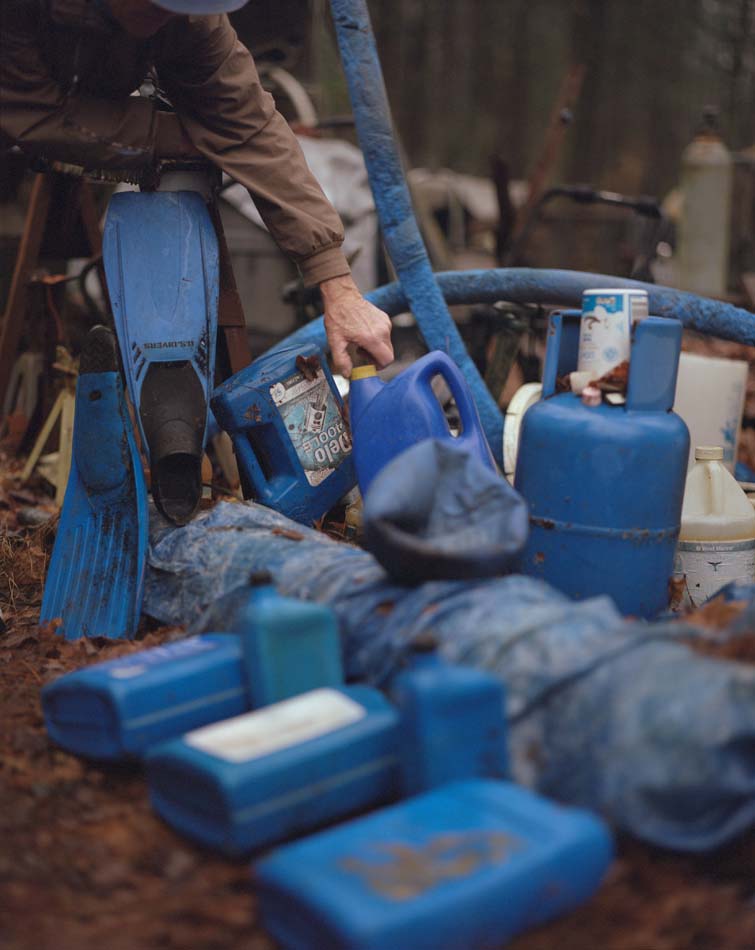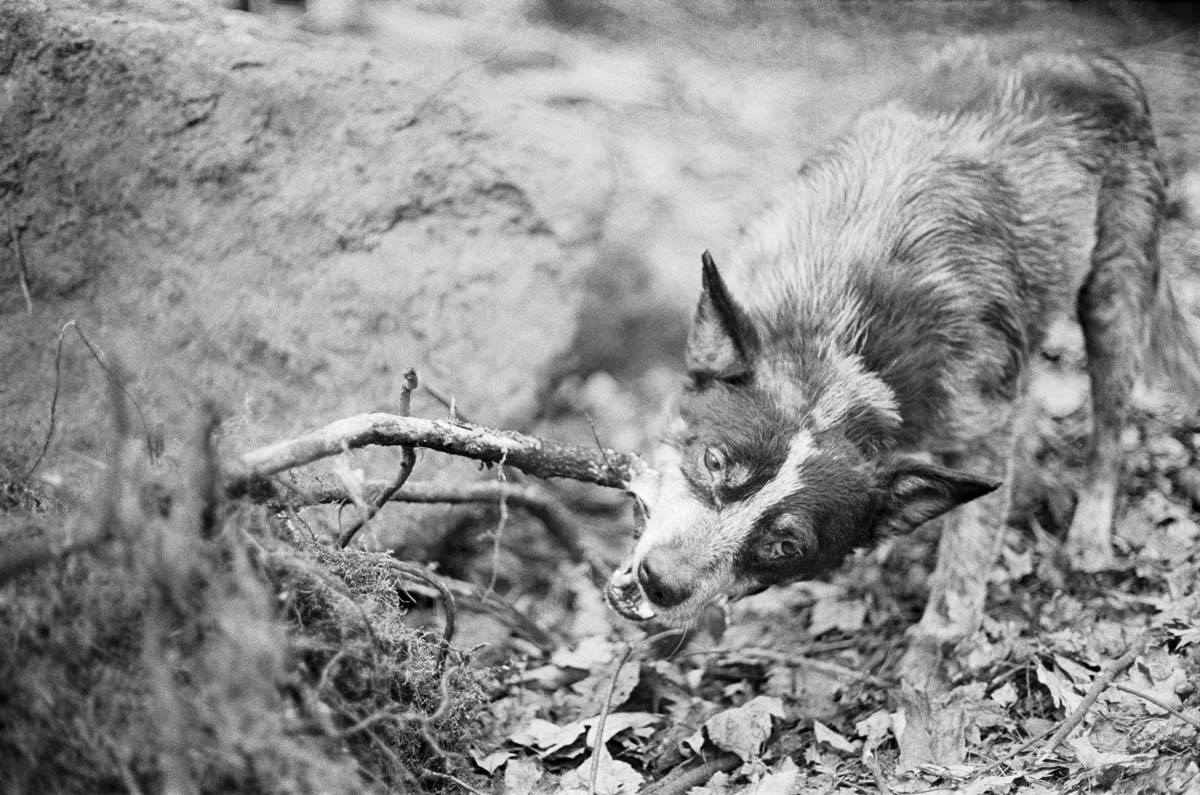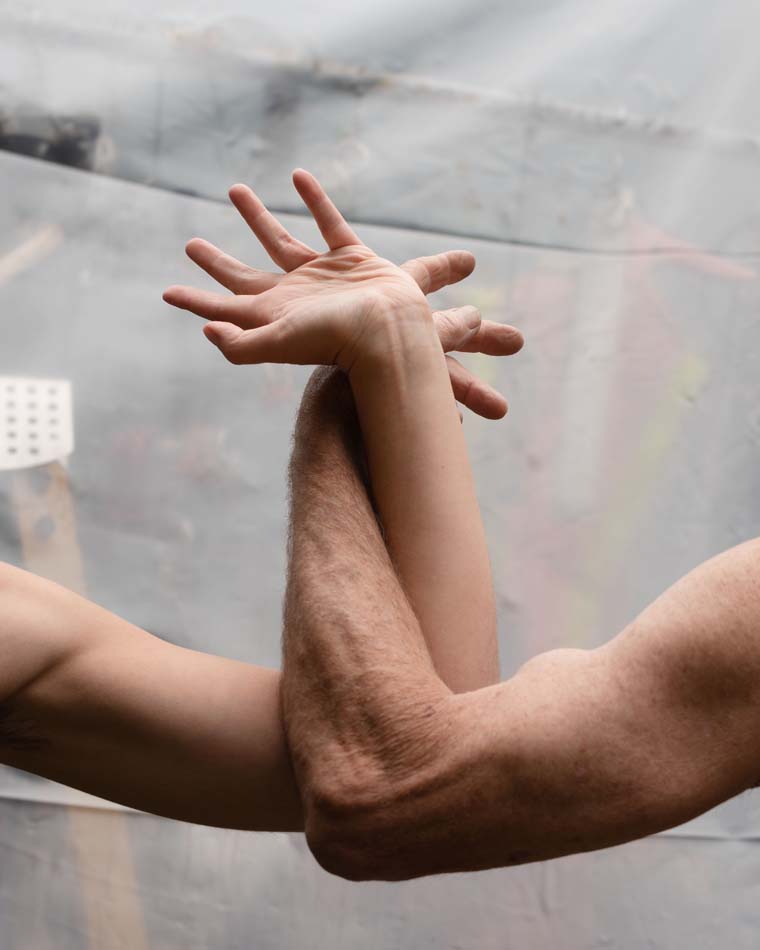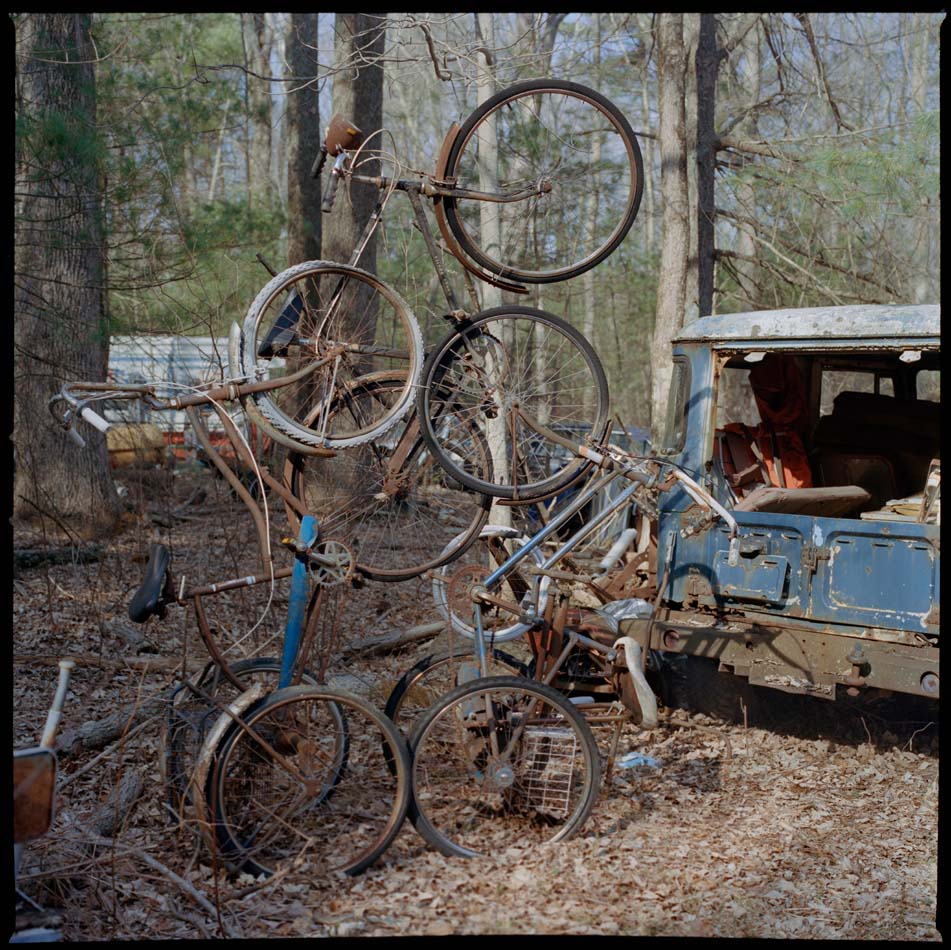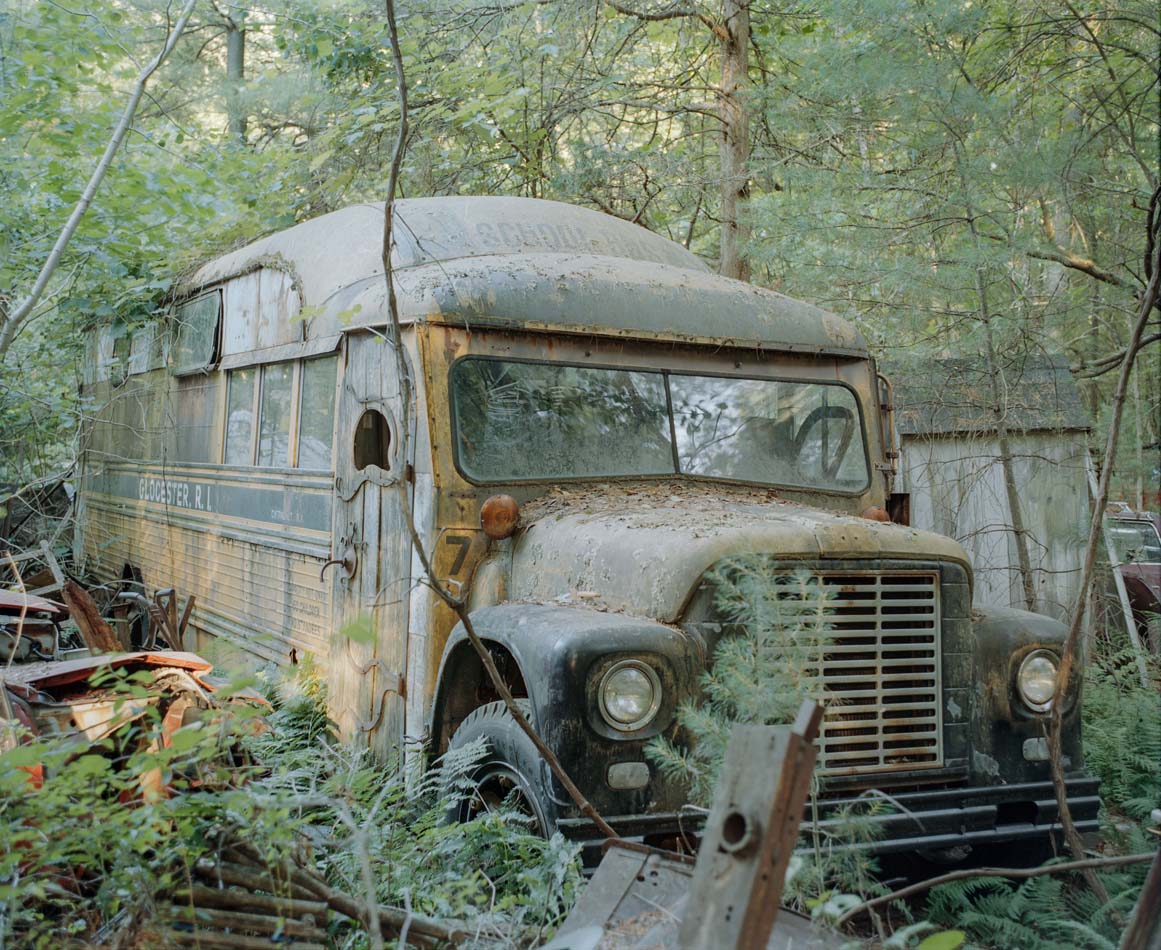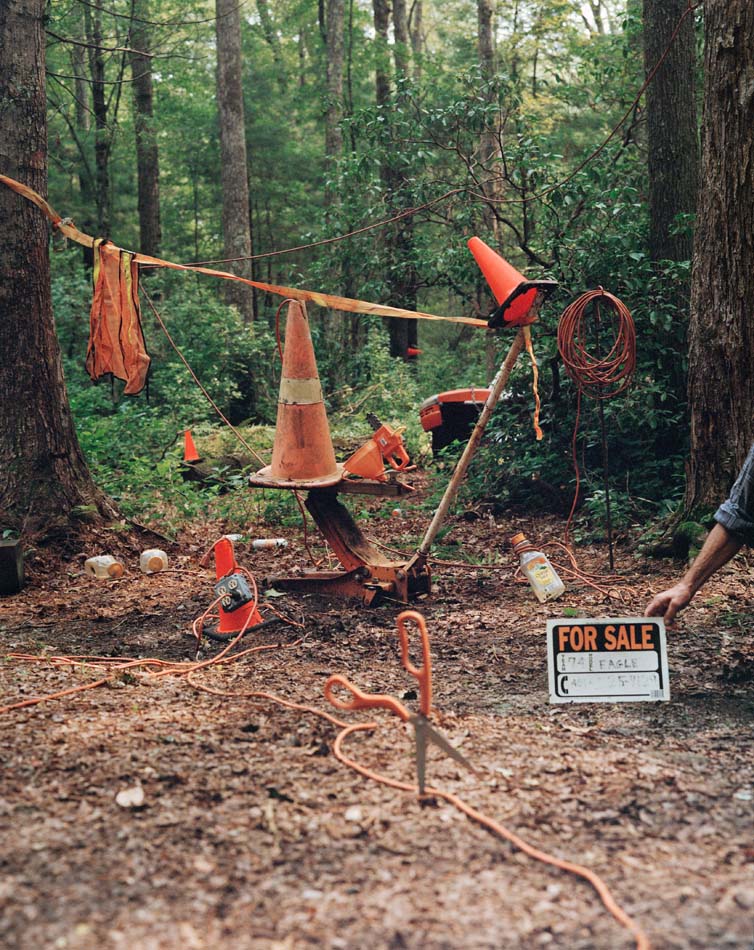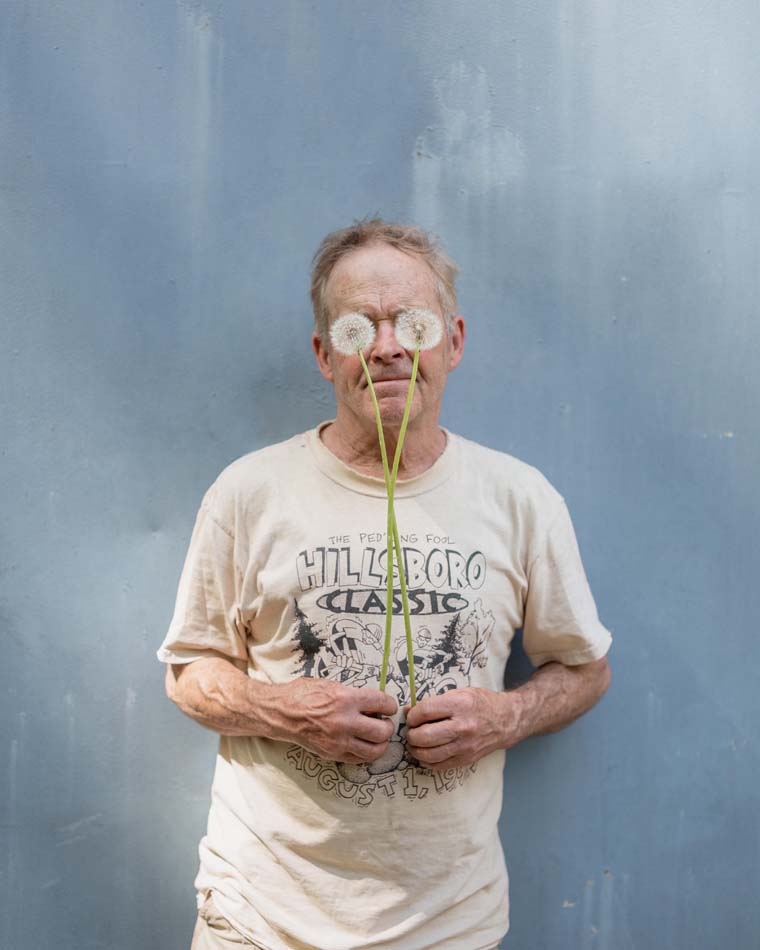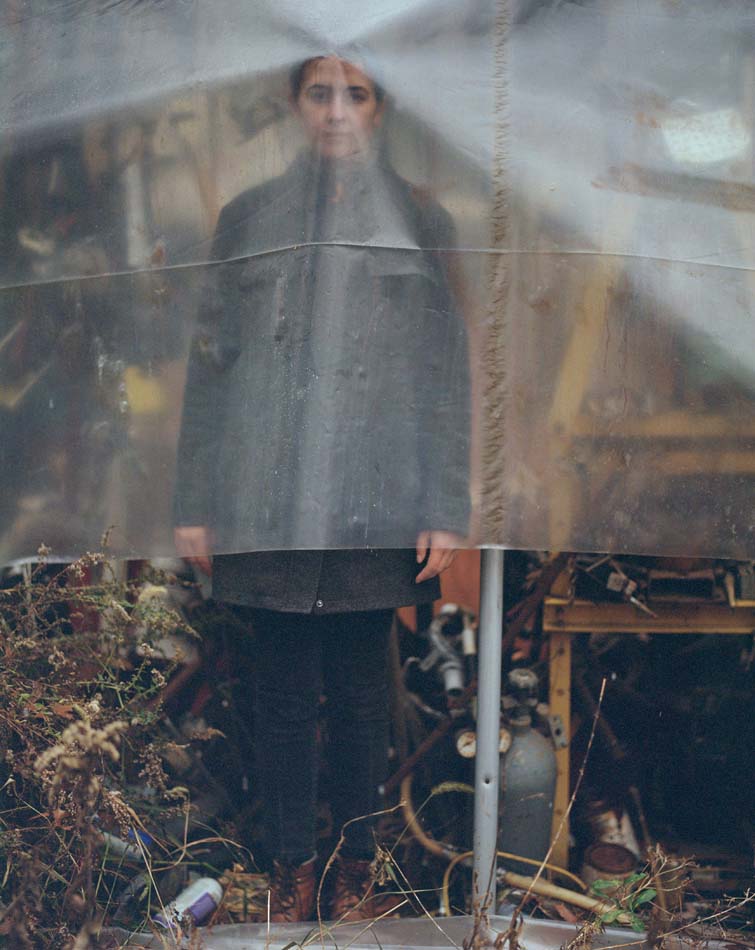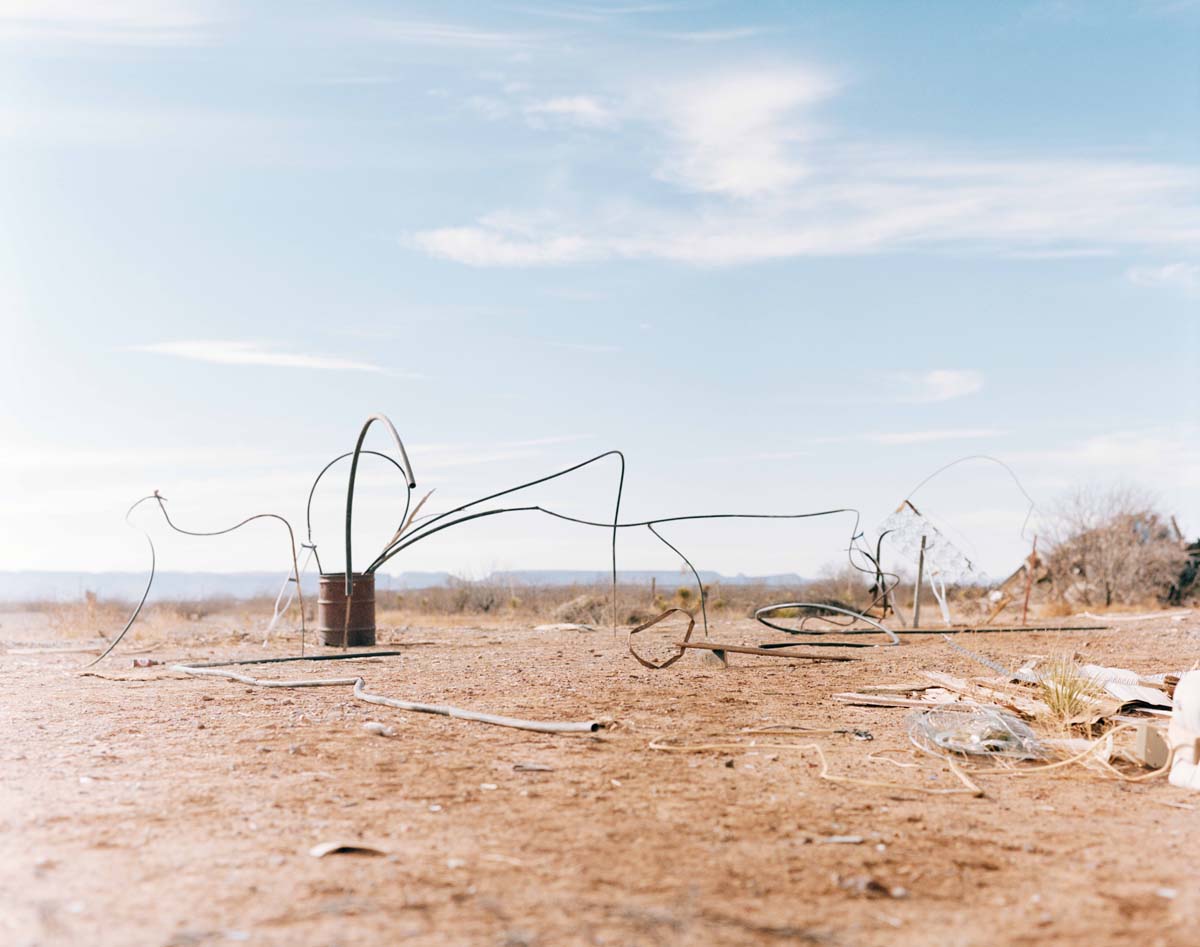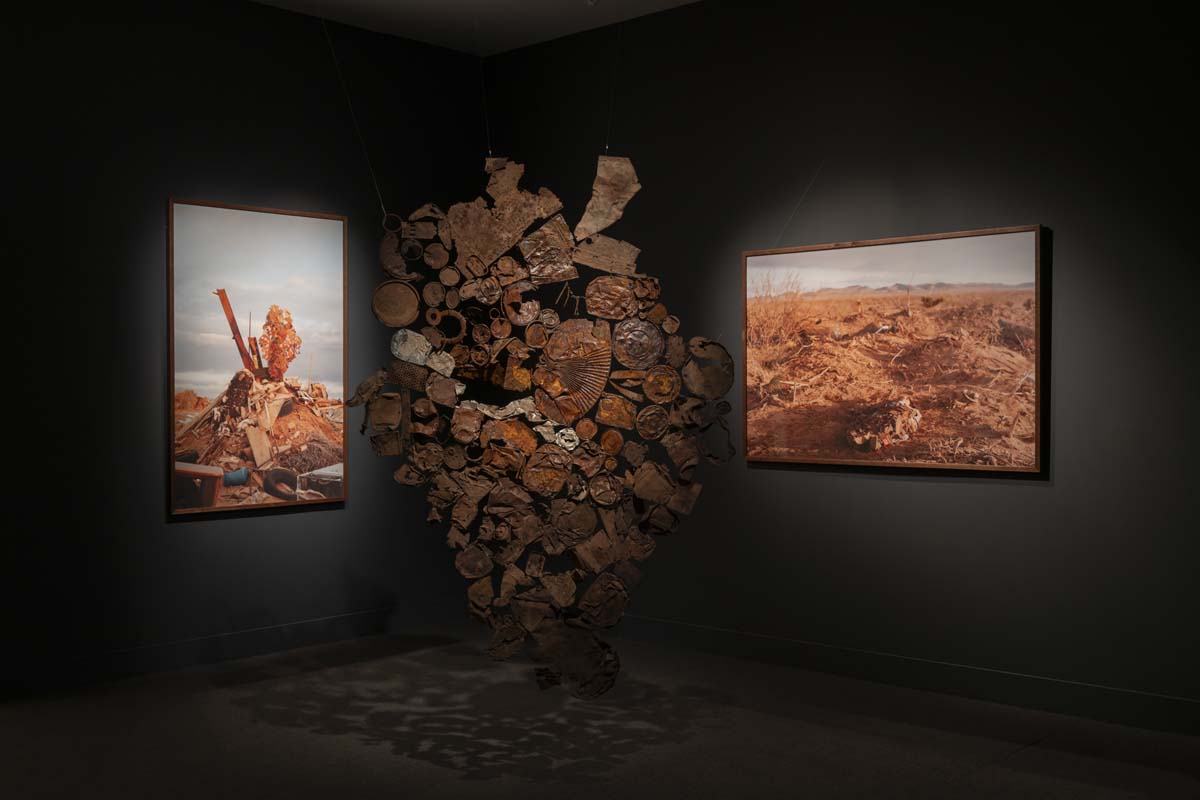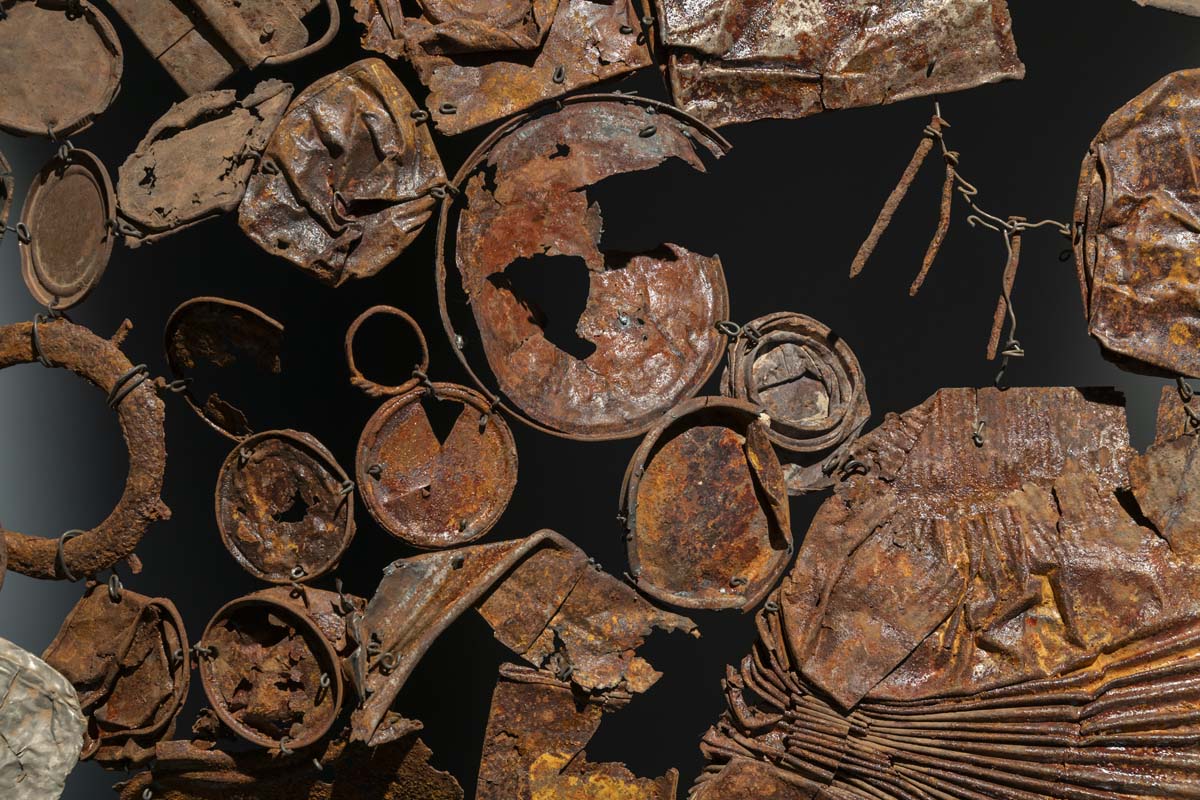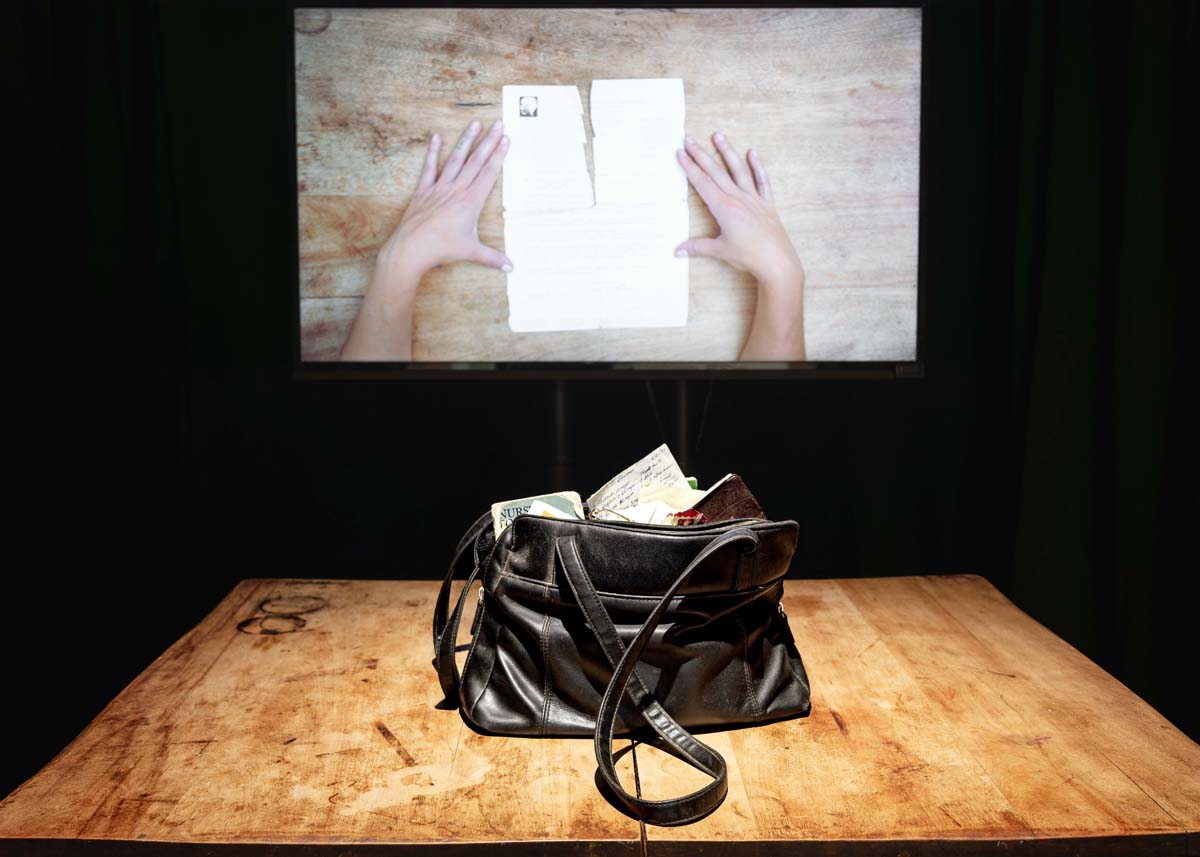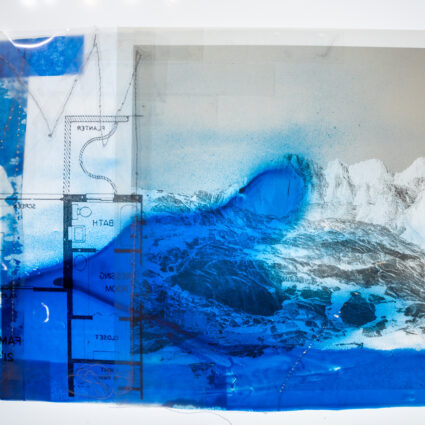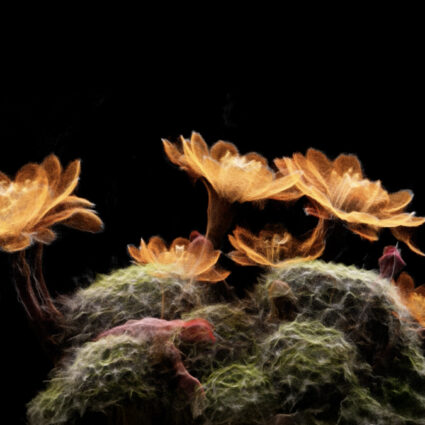Phoebe Shuman-Goodier’s photography documents her sculptural collaborations with her father, and a shared obsession with transforming a junkyard into art.
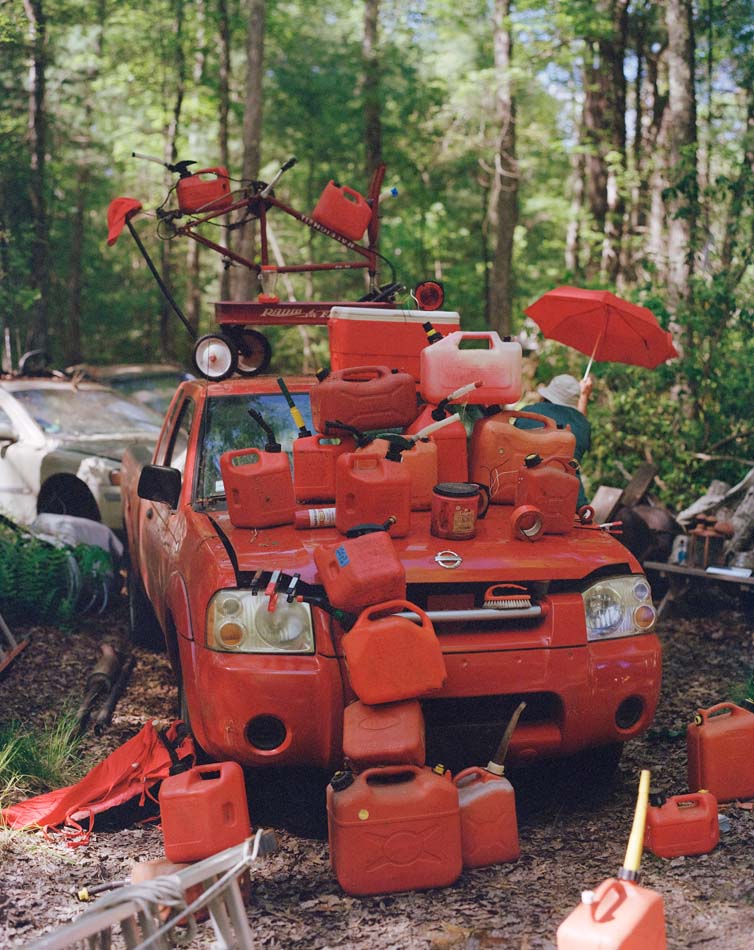
“I think that just comes from growing up the way I did, where I’m just surrounded by objects,” she says. “And having the dad that I have. He just really appreciates objects in their totality.”
In Bad Dogs (2013-ongoing), the Pflugerville, Texas–based artist records the objects out on her father’s fifteen-acre property in Rhode Island, where she grew up. When she was eleven, her parents divorced, and her father started accumulating. Things relating to his passions—cars, sailboats, motorcycles, bicycles, trucks, backhoes—started piling up more and more.
“I found that kind of playing with the stuff—that otherwise is a big obstacle—was way more appealing than just like walking around photographing it,” Shuman-Goodier says, recalling the active approach she developed to construct the photographs. Each time she visits, she and her dad collaborate on a sculptural installation culled from the items at hand: a collection of red gas cans, a mountain of bicycles, an aggregation of orange traffic cones. Arranged just so, the objects are transformed by Gestalt principles—from junkyard detritus to monuments of memory, meaning, and possibility.
Bad Dogs refers to her family’s tendency to communicate through their love for their pets; “I think it’s also a lesson in learning to navigate difference,” she suggests, to care for that which might be devalued by society.
“People don’t really understand it as a disability, as a mental illness,” Shuman-Goodier remarks about her father’s condition. “I feel like our society mostly views it as a personal failing, a character flaw.” Hoarding disorder, a type of obsessive-compulsion, affects an estimated two to five percent of the general population. Because of the dual stigma and sensationalism associated with hoarding, Shuman-Goodier sometimes bristles at the term—even though she realizes that so many people can relate to it.
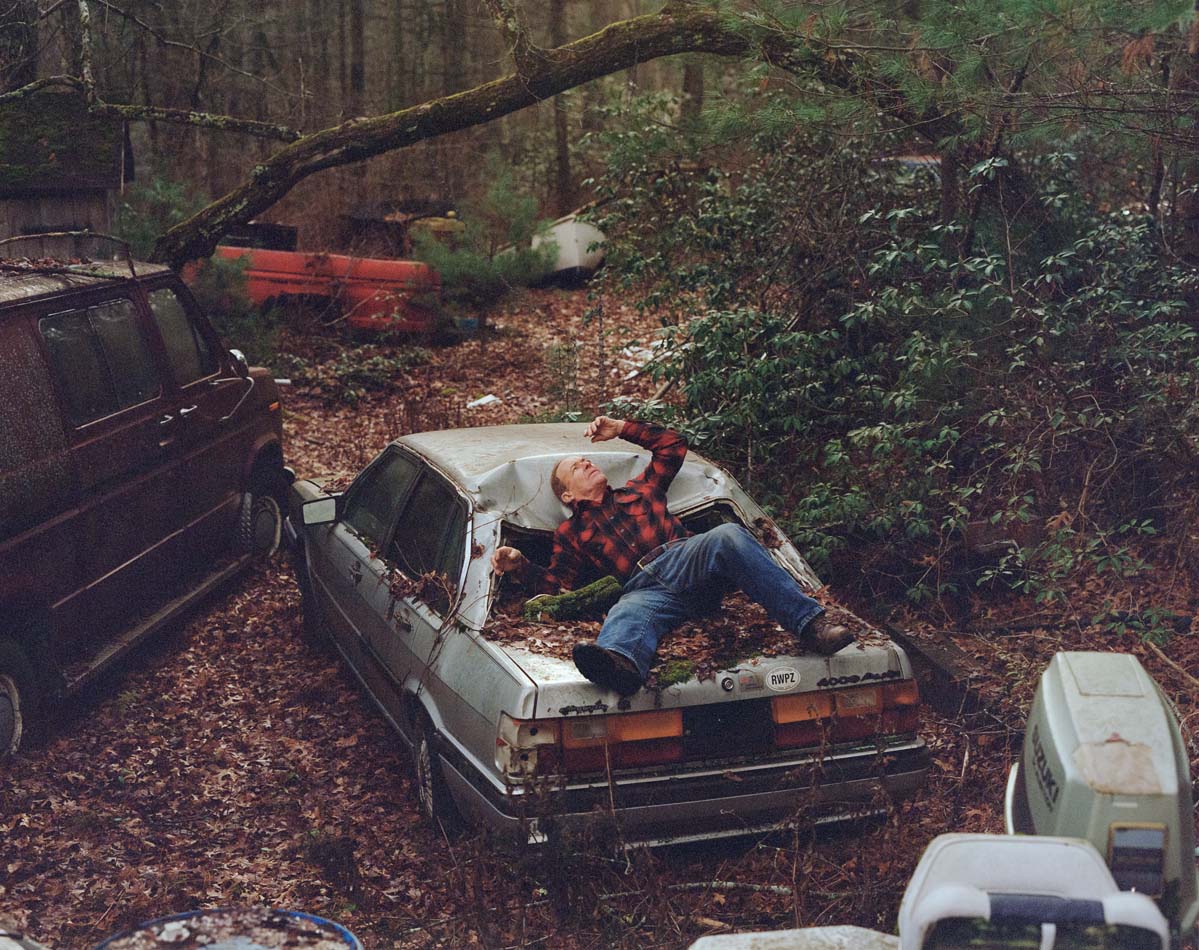
Society’s hostility towards those who hold on to things too long also obscures other ills—like unbridled consumerism and waste culture. “On the other side, people who just throw everything away and just rely on single-use everything… that’s pretty messed up too,” she says.
In the imagery, it seems Shuman-Goodier channels her father’s gaze, his particular way of relating to his things “as sources of unlimited potential.” She finds his way of viewing things both “deeply optimistic and generative,” while also involving “a loss of perspective that can have really harmful side effects.” That tension is present in the images—simultaneously inspiring and troubling.
While her father’s affliction contributes to his loss of perspective, Shuman-Goodier’s perspective comes through in the framing of the photographs. The things she chooses to show somehow contain limitless potential, but are also subject to entropic disintegration—the strata of stuff accumulated over time. “You can sort of peel layers back, like a geological timeline,” she says.
Shuman-Goodier recently graduated with an MFA from the University of Texas at Austin. In Texas, she has challenged herself to translate what she’s learned through working with her dad into a practice that can be applied to other sites.
Out in a tiny town called Valentine, in far West Texas, Shuman-Goodier assigned herself the role of “Valentine dump artist-in-residence,” where she has been “exploring the dump as an intersection of man-made objects and the natural world.” Here she has observed the differences between the woody and wet Northeast and the arid Southwest. “The way the desert digests objects [is] different from where I’m from, where things kind of get grown over and mold and rot. Here they just dry out and break apart.”
In Valentine, she made a piece called Rust Shroud (2025) of flattened, rusted metal woven together with baling wire. She hung it in her MFA thesis exhibition, and then took it back to the desert to photograph it. Her friend modeled it for her, lying on the ground, covered with the desert-colored shroud, becoming almost invisible in the landscape. Then she stood with it, among “the trash hills… holding it up like a little explosion,” the long rays of the setting sun setting it alight like a fire.
